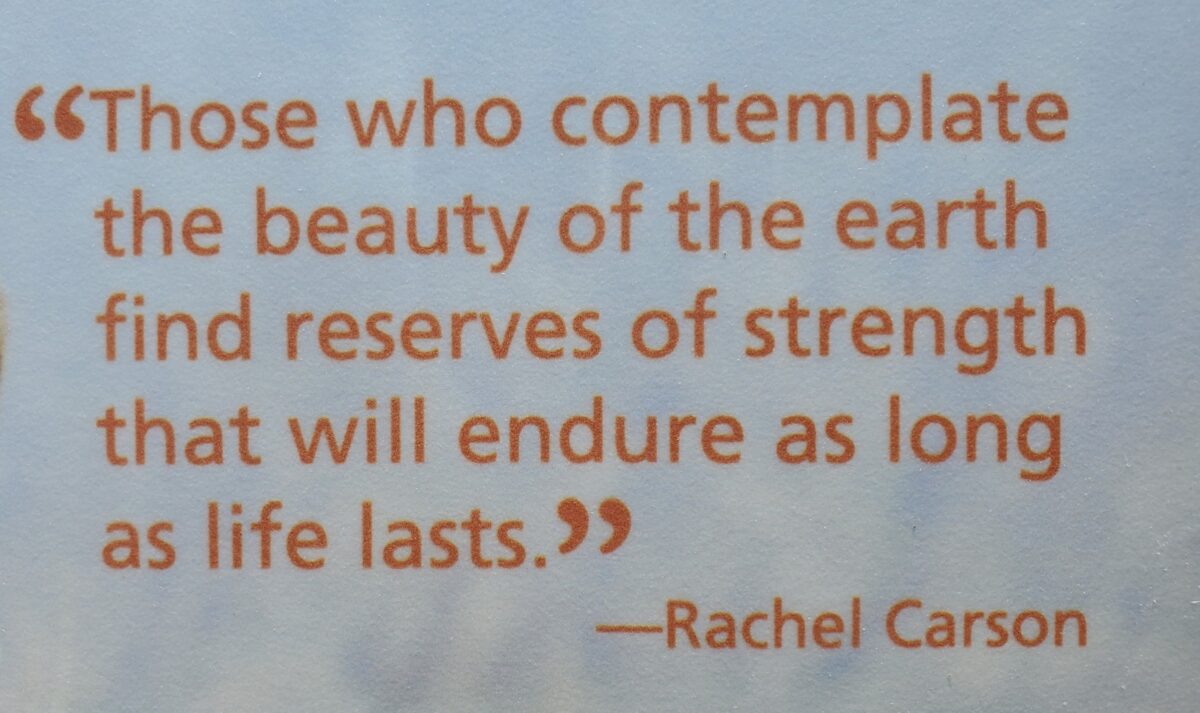While it’s not much fun packing up to leave each season, being on the road is our favorite place!
It goes without saying that we seek natural places wherever we go.
We left Lake Havasu City last Tuesday for St. George. After driving all day, the last thing I would have expected D.A. to say was, “Let’s go to Zion tomorrow.” If I had really thought about it I would have gone right online for any news about visiting Zion NP, but no, it did not occur.
Zion National Park
Zion is one of the most-visited national parks in the U.S., was Utah’s first national park and is definitely the most popular of the five national parks in Utah.
The next morning, nearing the park, we saw a sign that said, “Visitor Parking Full – Take Shuttle.” Oh-oh!
They waived us right through the main gate, like we knew what we were doing, but alas, the parking lot was full. Thinking we’d just drive up the road until we found someone to talk to, we only went a short distance when we saw a sign for the museum. We stopped and were happy to see a Ranger standing outside answering questions. She told us the main “Scenic Drive” was closed to all traffic except the shuttles. However, there were a couple of other drives we could take.
She also told us 16,000 people visit the park each weekday, 17,000 to 20,000 on the weekends. At 2PM each day, you can go to the Visitor Center to buy any remaining shuttle tickets for the day. The alternative is to buy in advance. 50% of the daily amount of tickets go on sale online each day at 3PM. They are sold out in 3 to 5 minutes!
We first took the Zion-Mount Carmel Highway to the east entrance. It was a gorgeous drive (and quite crowded) but very much worth the effort and we found a nice spot for a picnic lunch.
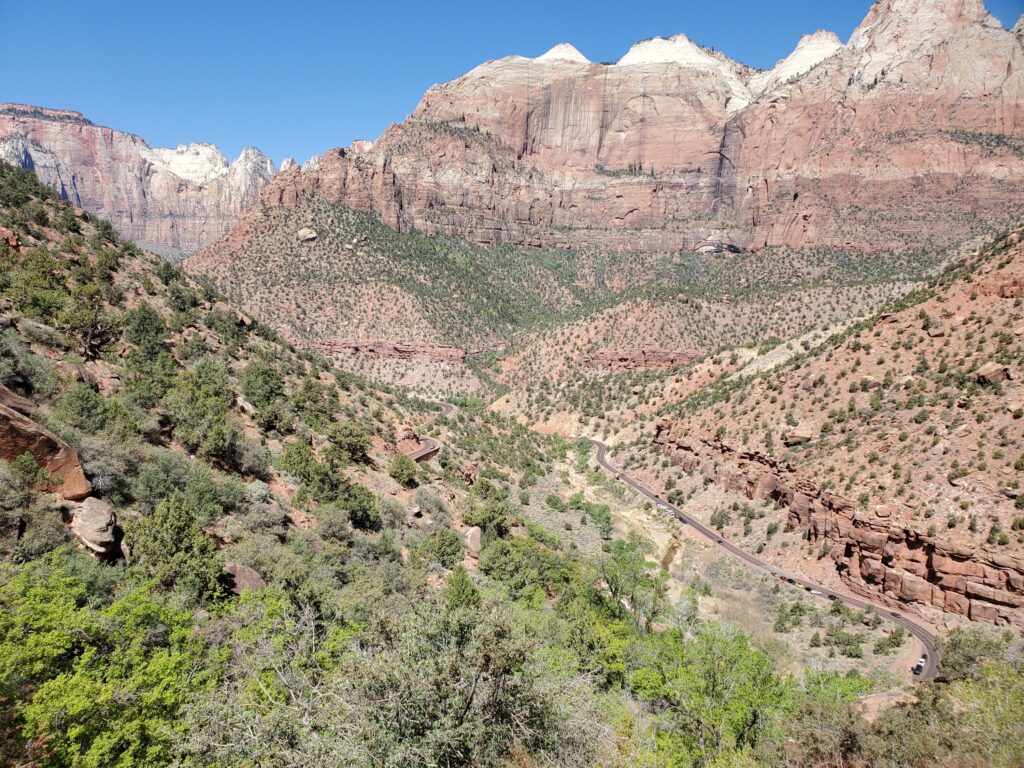
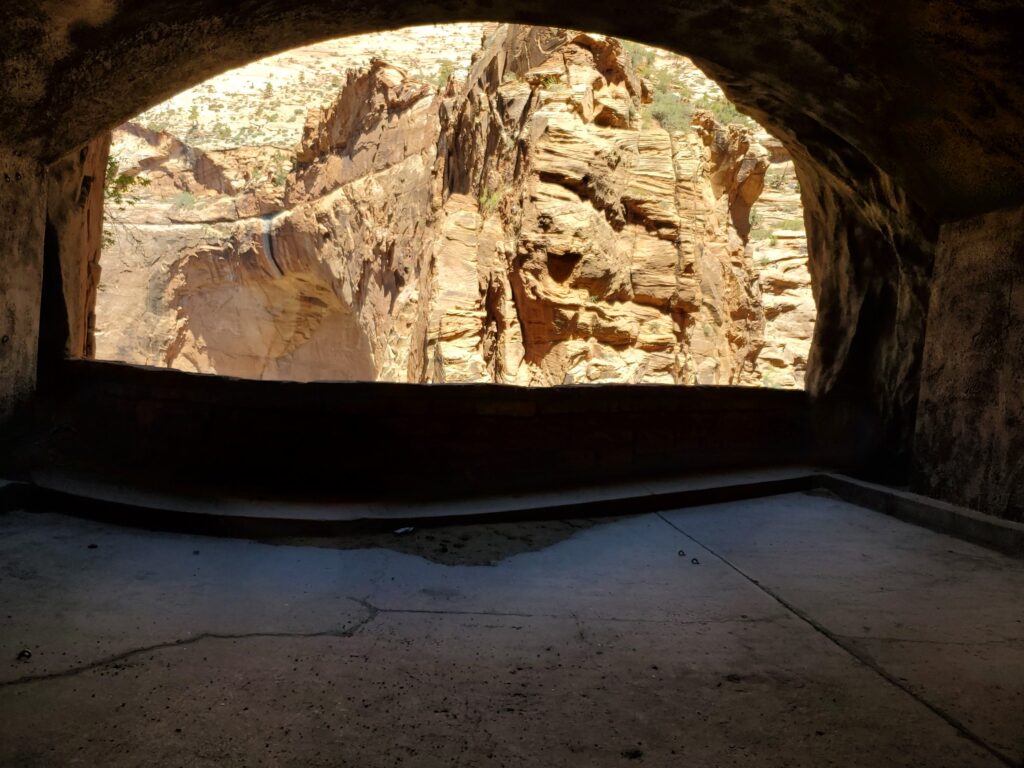
As we drove through the Park and happened to pass several shuttle busses, we couldn’t help but notice they were nearly empty – one or two passengers max. Ha ha and Oh Well!
Later, we went back the way we came to the park originally to the town of Virgin and took Kolob Terrace Road to the Lava Point Overlook (almost 8,000 feet elevation) and no traffic to speak of. It too was a gorgeous ride and even more geologically diverse, ending in tall pines and snow.
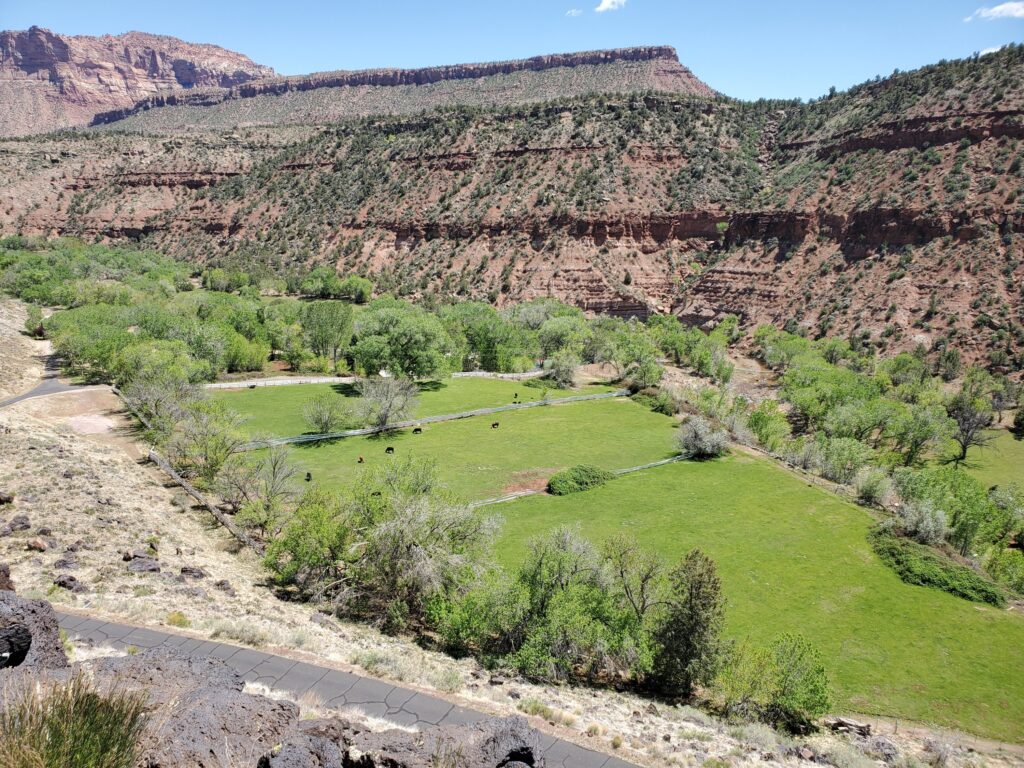
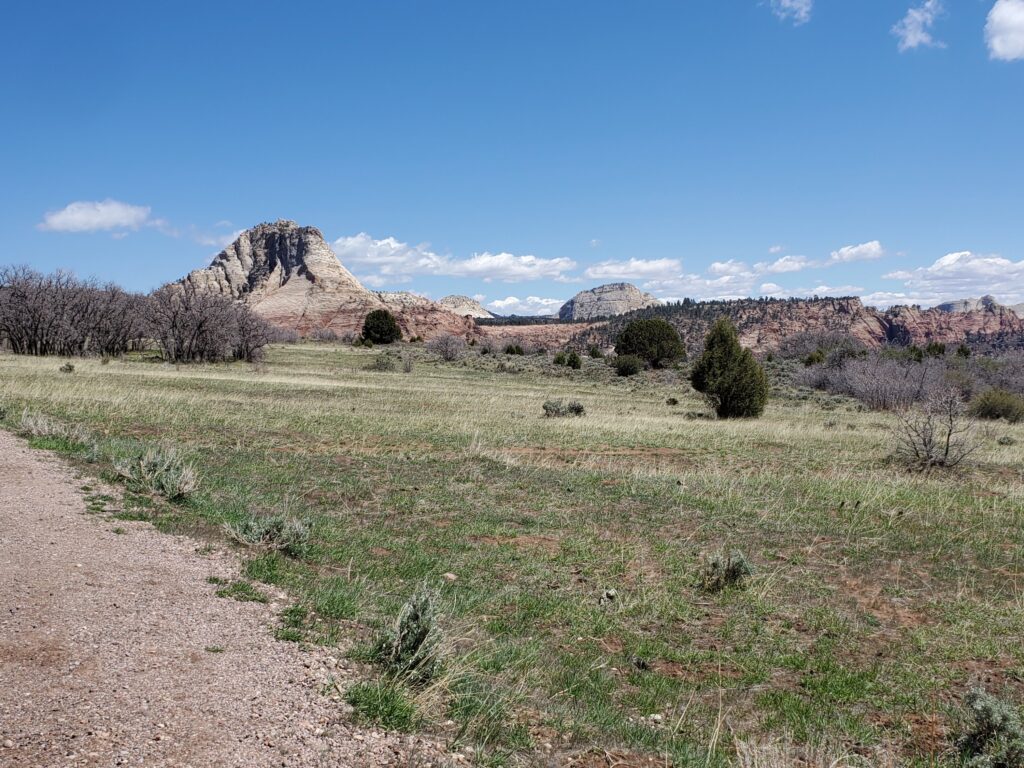
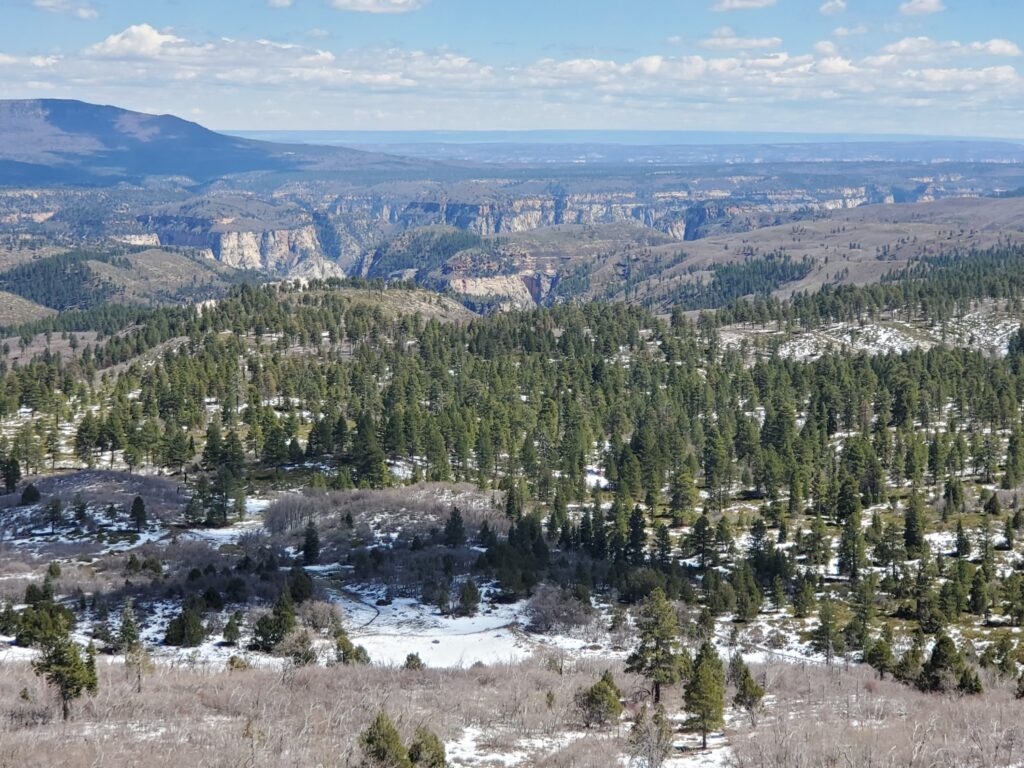
On the way back to Virgin, we talked about how the day did not turn out at all as expected, yet it was one of our best days on the road ever!
“You have to take risks. We will only understand the miracle of life fully when we allow the unexpected to happen.” -Paul Coelho
The next morning we continued to Salt Lake City. We dropped our boat at Fred’s Marine in Layton for a floor replacement and headed to our reserved “camp” at Circle L Mobile Home and RV Community. It’s a tiny park with lots of grass and huge trees, only a few RV spots and, seemingly, a lot of long-term residents. A little different experience than what we usually have in an “RV Resort” but pleasant enough, at least until we passed two police cars as we were leaving to go touring the next morning. Makes one wonder but at least they didn’t tell us to leave the area immediately or get back to the safety of our RV…
Bear River Migratory Bird Refuge
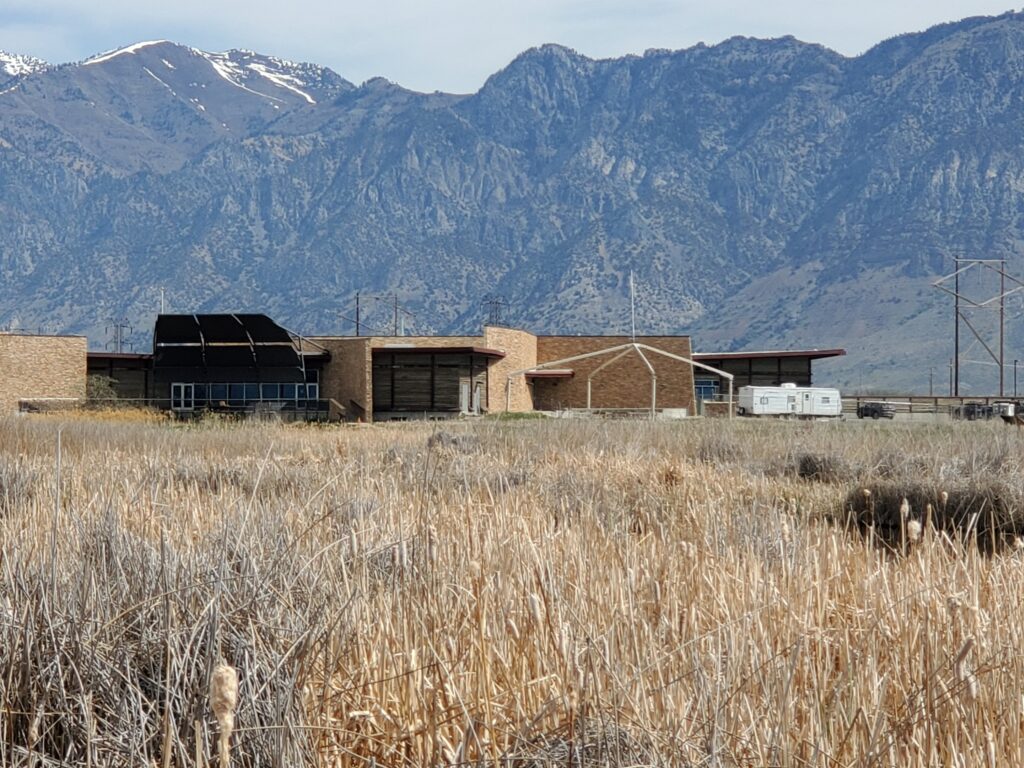
Our destination was the Bear River Migratory Bird Refuge near Brigham City. This was our third visit and we couldn’t wait to get back on the 12-mile auto tour. I am re-reading (for the third time also) Refuge: An Unnatural History of Family and Place by Terry Tempest Williams, a poet and naturalist. The memoir takes place in 1983 as Terry was losing her Mother to cancer while, at the same time, she was losing the place she most loved in her home state of Utah – the Bear River Migratory Bird Refuge – to flooding. Just as the first and second times I read it, I often think, “I cannot bear to read this,” because it brings up such strong emotion, but then I realize I cannot bear not to read it equally because I love this book so dearly.
I gave D.A. a lightweight scope and tripod for Christmas. I thought we would use it for the Christmas Bird Count at the “Bill Will,” but we ended up doing our share by boat so the scope and tripod didn’t seem accompany us. Now we were going to do some serious (for us) birding and we came to the refuge with the scope, tripod and my eBird app loaded for Utah.
The Refuge and other wetlands associated with the Great Salt Lake provide critical habitat for migrating birds from both the Pacific and Central Flyway of North America. This area contains abundant food for birds, including very important brine shrimp and other macroinvertebrates as well as necessary plants like sago pondweed. Birds come to the Refuge by the millions to eat and rest during migration, and many other species stay to breed, nest and raise their young across the Refuge wetlands. Several of the Refuge’s priority species are American Avocet, White-faced Ibis, American Pelican, Snowy Plover, Black-necked Stilt, Cinnamon Teal, Tundra Swan.
We were fortunate enough to see all but the Snowy Plover and Tundra Swan. We saw 29 “Taxa” (unit species) and counted 1,509 individuals but I’m happy to admit I stopped counting individual Franklin’s or Ring-billed Gull, Violet-green Swallow, Brewer’s Blackbird when the count went over 200 each!
Great Salt Lake Shorelands Preserve
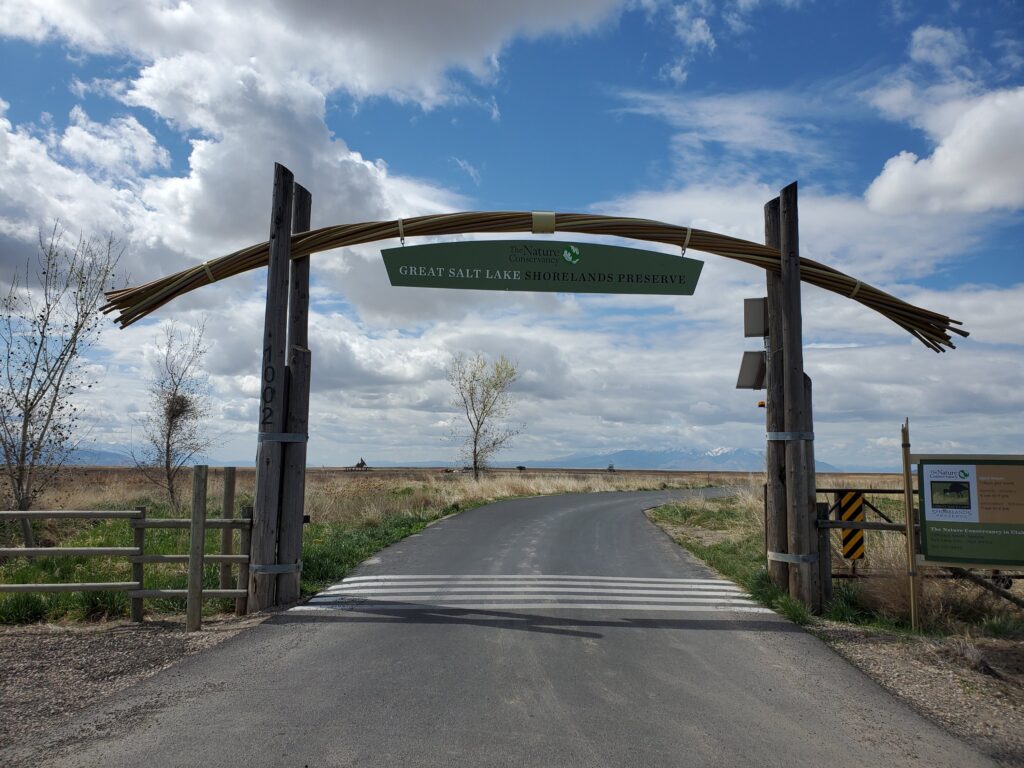
Today, we discovered a new destination near us in Layton: the Great Salt Lake Shorelands Preserve, the first Nature Conservancy preserve in Utah.
This Preserve spans 4,400 acres of wetlands and uplands habitat along the eastern edge of the Great Salt Lake. As the largest saline lake in the Western Hemisphere, the Great Salt Lake is crucial to both people and nature. The lake is a rich feeding ground for migratory shorebirds and waterfowl, supporting between four and six million migratory birds as they journey from as far north as the Arctic to southern points in Central and South America.
Some of the largest gatherings of wildlife ever recorded on the Great Salt Lake have been observed from the preserve’s visitor center, making it a birdwatcher’s paradise as well as the perfect place for visitors to appreciate the importance of the Great Salt Lake.
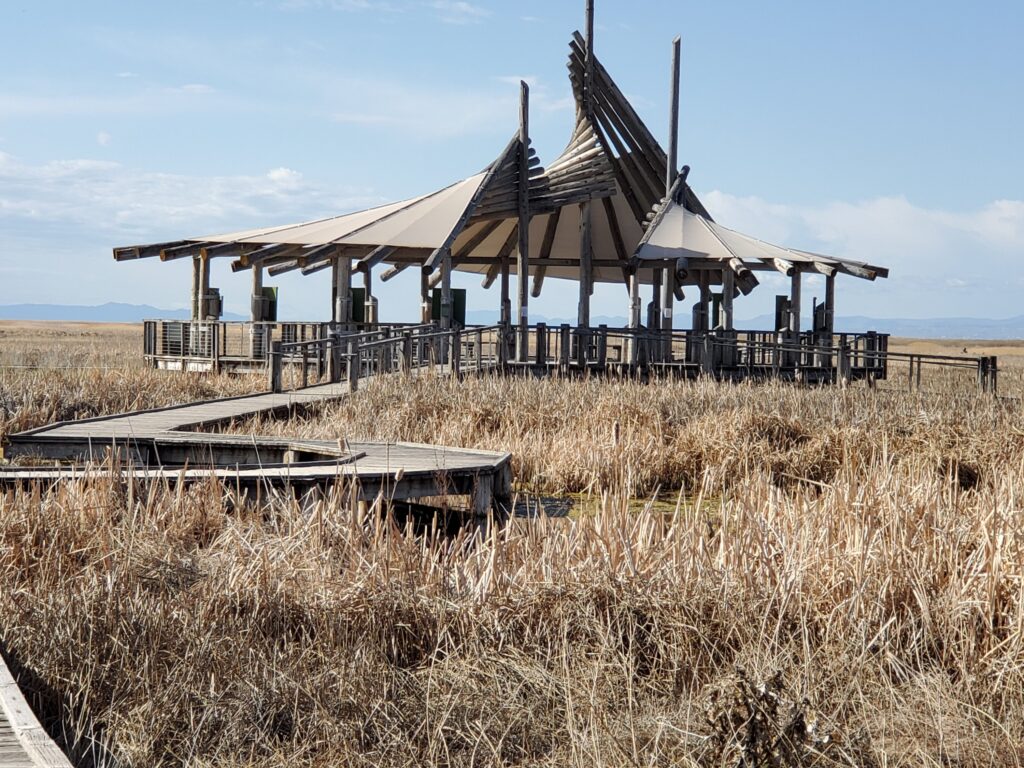
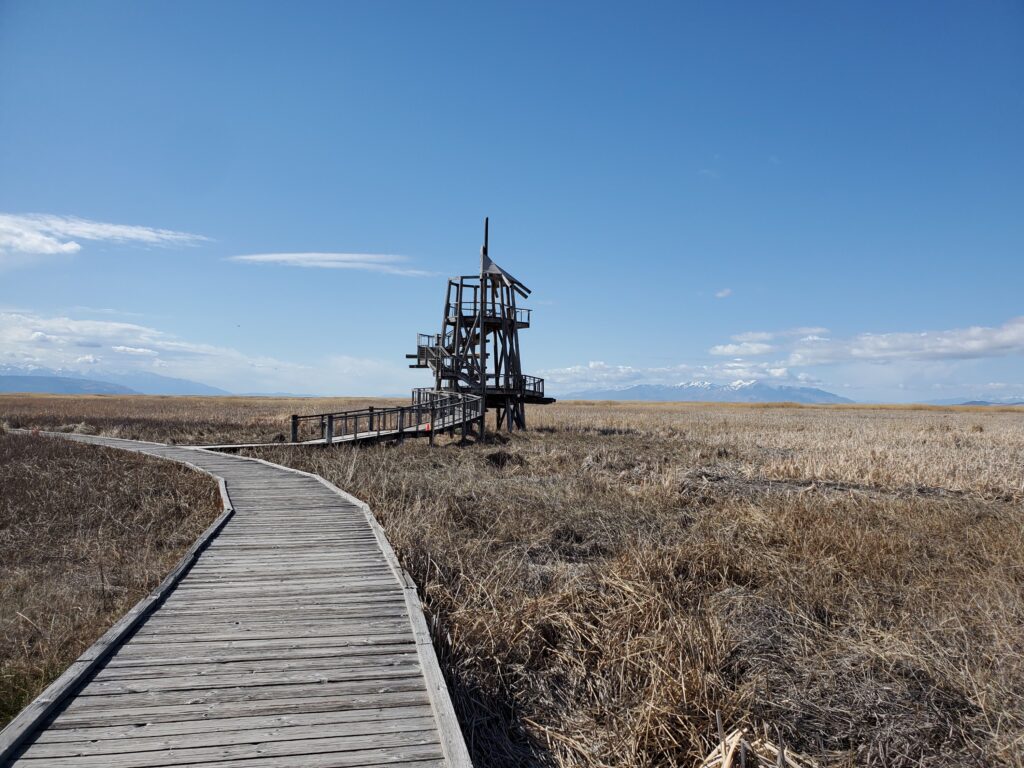
Here we saw a total of 12 Taxa and 70 individuals but the highlight came at the top of the observation tower. D.A. thought he heard a Sora, but the eBird app said they were not common in the area. We waited and listened and waited some more and sure enough, we SAW the Sora. Sora’s are mysterious marsh birds. Here’s the description from Cornell Lab:
“A descending whinny emanates from the depths of cattails and rushes, but the source of this sound rarely shows itself. This secretive brown-and-gray marsh bird is a Sora, but drab it is not. When it finally pokes its head out of the reeds its bright yellow bill might have you thinking about Halloween candy corns. The Sora walks slowly through shallow wetlands a bit like a chicken that has had too much coffee, nervously flicking its tail and exposing the white feathers below.”
D.A. has great photos (unfortunately not quite fast enough to get the Sora) that he will share on Facebook.
See what I mean? The road is the place we like to be!
